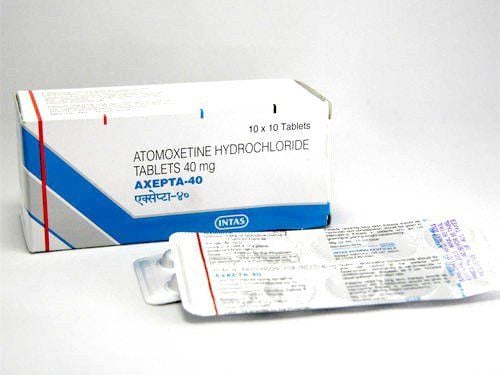This is an automatically translated article.
The article is expertly advised by MSc. Doctor Vu Thi Duyen - Doctor of Nephrology - Endocrinology, Department of Examination & Internal Medicine - Vinmec Hai Phong International General Hospital.Regular weight monitoring, adjusting to a healthy diet and appropriate physical activity can help people with diabetes control their condition and prevent potentially dangerous complications.
1. Overview of diabetes
Most of the energy needs of the cells in the human body will depend mainly on a simple sugar called glucose. Meanwhile, the body will have complex mechanisms to regulate blood glucose levels in the body without dropping too low or rising too high.When you eat most of the digestible carbohydrates will be converted into glucose and quickly absorbed into the bloodstream. Any rise in blood sugar signals the pancreas to produce and release the hormone insulin, and instructs cells to absorb glucose. If enough insulin is not produced, glucose rises high in the blood and cannot get inside the cells that need it for energy. Diabetes mellitus, also known as diabetes mellitus, is characterized by abnormally high glucose levels in the blood. This is because the body does not produce enough insulin or does not use insulin properly. Normally your blood glucose level will rise after you eat and drop after 1-2 hours as glucose is carried out of the blood and into the cells. However, in people with diabetes their blood sugar can still rise within a few hours. Even their glucose levels can be much higher after eating than people without diabetes.

Bệnh đái tháo đường có khả năng gây ra nhiều biến chứng nguy hiểm
Diabetes can lead to many dangerous complications such as heart, eyes, kidneys, brain. A higher than normal blood sugar level damages tissues and organs in the body. On the other hand, it is now also the leading cause of kidney failure and blindness in adults. Diabetes can cause nerve damage from mild to severe as diabetic foot can lead to loss of a substance or foot. In addition, diabetes also significantly increases the risk of cardiovascular disease, including heart attacks and strokes - the two leading causes of death in the world.
2.Simple steps to prevent diabetes
When it comes to diabetes, especially type 2 diabetes, prevention is far more important than treatment. You should especially choose to prevent diabetes if you have many risk factors for the disease such as being overweight, obese, have a family history of diabetes (parents, brothers). or have ever been diagnosed with prediabetes (also known as fasting dysglycemia), gestational diabetes.To prevent diabetes we need a plan: Build for each individual a healthier diet, keep a reasonable weight and be more physically active, especially it's never too late to start to change. Just making a few small changes to your lifestyle now can help prevent the serious health complications that diabetes can cause, such as nerve, heart, and kidney complications. , Brain.
Here are some simple but effective diabetes prevention methods that anyone can do:

Bạn hoàn toàn có thể ngăn ngừa bệnh tiểu đường bằng nhiều biện pháp
2.1 More physical activity
When increased physical activity can bring many health benefits in general as well as diabetes prevention in particular. Regular exercise can help you:Effective weight loss. Lower blood sugar to a reasonable level. Increases the body's sensitivity to insulin, thereby helping to maintain normal blood sugar levels. Several studies have shown that regular aerobic exercise and resistance training can significantly contribute to diabetes control. So there is no reason why you should hesitate to do them today.
You don't have to exercise for a long time, be hot and sweat a lot to achieve the goal of preventing diabetes. According to health experts, research has shown that you can walk briskly for half an hour a day to reduce your risk of developing type 2 diabetes by 30%. In addition, exercise can also help You get greater benefits on your heart health when you exercise with more intensity.
Spending hours in front of a TV screen appears to be a particularly harmful form of activity. According to research, every 2 hours you spend watching TV instead of doing more active activities increases your risk of diabetes by 20%, increases your risk of heart disease by 15% and increases your risk by 13%. premature death. The more television you watch, the more likely you are to be overweight or obese.
2.2 Add more fiber
Fiber is one of the substances that is especially important in the diet of people who are at risk of diabetes or already have diabetes. Fiber supplements can give you the following health benefits:Reduce your risk of diabetes by keeping your blood sugar under good control Reduce your risk of heart disease Helps you feel full for longer , thereby promoting effective weight loss You can get fiber through the following foods: vegetables, fruits, beans, nuts and whole grains.

Chất xơ đem lại nhiều lợi ích cho sức khỏe
2.3 Eat whole grains
According to researchers, eating whole grains regularly can reduce the risk of diabetes and maintain blood sugar at an appropriate level. You should try to eat at least half of your grains as whole grains.There are now many foods that are made from processed whole grains, including bread, cereal, or pasta products.
2.4 Weight control
Being overweight is the main cause of type 2 diabetes. Being overweight can increase your risk of type 2 diabetes sevenfold. Meanwhile, being overweight can put you 20 to 40 times more likely to develop diabetes than someone of normal weight.When you lose about 7-10% of your current intake, you can cut your risk of developing type 2 diabetes in half.

Kiểm soát cân nặng là một biện pháp giúp bạn ngăn ngừa bệnh tiểu đường
2.5 Adjusting the diet
Other low-carb diets or fad diets may only help you lose weight at first, but their effectiveness in preventing diabetes and long-term effects have yet to be proven. By excluding or severely limiting your consumption of a particular food group, you may be depriving many of your essential nutrients from those foods. Instead, you should diversify and portion control in your healthy diet.Here are four dietary changes that may contribute to your diabetes risk reduction, including:
Choose whole grains or whole grain products instead Refined grains and other processed carbohydrates Don't drink sugary drinks, opt for water, coffee or tea instead Choose healthy fats Limit red meat, avoid consumption Consume more processed meat, opting for nuts, beans, poultry or fish instead.
2.6 Quit smoking
Smoking is one of the leading causes of type 2 diabetes. Regular smokers have an approximately 50% higher risk of developing diabetes than non-smokers. In general, the more you smoke, the higher your risk of developing diabetes.
Để ngăn ngừa bệnh tiểu đường, bạn cần bỏ thuốc lá
2.7 Drinking alcohol in moderation
There is evidence that moderate alcohol consumption can reduce the risk of heart disease. The same may be true for type 2 diabetes. Moderate amounts of alcohol, up to one drink a day (for women) and up to two drinks a day (for men), can increase the effectiveness of insulin in getting glucose inside the cells. cell.Other studies have also shown that drinking alcohol in moderation can reduce the risk of type 2 diabetes, but too much can be counterproductive, even increasing the risk of the disease.
3. When should you see a doctor?
The American Diabetes Association recommends that you have regular blood sugar checks if you have the following high risk factors:45 years of age or older, sedentary. Being overweight, having one or more additional risk factors for diabetes such as a family history of diabetes, a personal history of prediabetes, gestational diabetes or lifestyle less healthy. From age 45 on, doctors usually recommend a diabetes screening every three years. In addition, you should also share your concerns about diabetes prevention with a specialist for advice and effective disease prevention recommendations for you. In case you want to know how much blood sugar is, what level of diabetes is, you can sign up for a diabetes screening package, dyslipidemia at Vinmec International General Hospital. Not only health screening, the diabetes and dyslipidemia screening package also helps to detect pre-diabetes early, accurately classify diabetes type, develop a nutritional regimen, and monitor the treatment of diabetes. risks and complications caused by diabetes.

Khách hàng có thể sàng lọc đái tháo đường, rối loạn mỡ máu tại Vinmec
Endocrine CK examination (with appointment) Total urinalysis (by automatic machine) Glucose quantification HbA1c quantification Acid quantification Uric Determination of Cholesterol Determination of HDL-C (High density lipoprotein Cholesterol) Determination of LDL-C (Low density lipoprotein Cholesterol) Determination of Triglycerides Determination of Urea Determination of Creatinine Measurement of AST Activity (GOT) Measurement of ALT Activity (GPT) GGT activity (Gama glutamyl Transferase) Quantitative MAU (Micro Albumin Arine) Transthoracic echocardiography, transthoracic pericardial echocardiogram Normal electrocardiogram, Carotid, transcranial Doppler (carotid) Doppler ultrasound, arterial and venous Doppler lower extremity vessels (bilateral lower extremity arteries).
Please dial HOTLINE for more information or register for an appointment HERE. Download MyVinmec app to make appointments faster and to manage your bookings easily.
References: mayoclinic.org, hsph.harvard.edu













